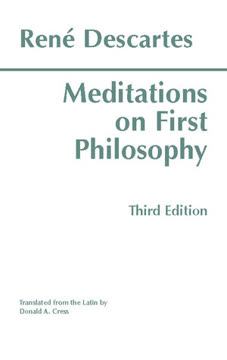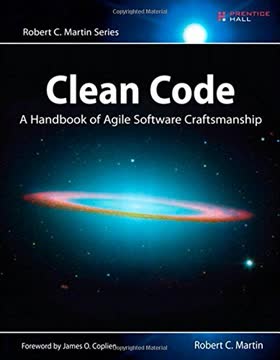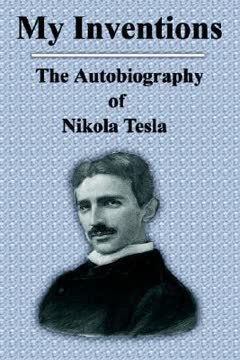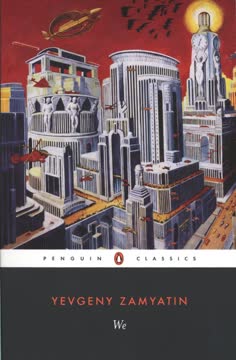Key Takeaways
1. The Imitation Game: A New Lens on Machine Thought
I PROPOSE to consider the question, ‘Can machines think?’
Turing's Proposal. Instead of directly tackling the ambiguous question of whether machines can think, Turing introduces the "imitation game" as a practical test. This game involves a human interrogator trying to distinguish between a human and a machine based on their written responses. The core idea is that if a machine can consistently fool the interrogator, it demonstrates a form of intelligence comparable to human thought.
Game Mechanics. The imitation game involves three participants: a man (A), a woman (B), and an interrogator (C). The interrogator's goal is to identify which of the other two is the man and which is the woman by asking questions. The challenge is then posed: can a machine take the place of the man and still deceive the interrogator as often as a human could?
Shifting the Focus. By framing the problem in terms of a game, Turing sidesteps the need for precise definitions of "machine" and "think." The focus shifts to observable behavior and the ability to mimic human responses, providing a concrete and measurable criterion for assessing machine intelligence. This approach allows for a more pragmatic and less philosophical exploration of the question.
2. Distinguishing Physical from Intellectual Prowess
The new problem has the advantage of drawing a fairly sharp line between the physical and the intellectual capacities of a man.
Intellectual vs. Physical. Turing emphasizes that the imitation game effectively separates the intellectual abilities from the physical attributes of a human. The game's design prevents the interrogator from relying on physical cues like appearance, voice, or touch, forcing them to focus solely on the content and quality of the responses. This distinction is crucial for evaluating whether a machine can truly "think" rather than simply mimic human-like physical characteristics.
Irrelevant Disabilities. The conditions of the imitation game render certain human disabilities irrelevant. A machine is not penalized for its inability to win beauty contests, nor is a man penalized for losing a race against an airplane. The game focuses on intellectual performance, allowing for a fair comparison between humans and machines in a specific domain.
Bragging Rights. The game allows participants to "brag" about their charms, strength, or heroism, but the interrogator cannot demand practical demonstrations. This highlights the importance of persuasive communication and the ability to create a convincing narrative, further emphasizing the intellectual aspects of the test.
3. Defining the "Machine" in Thinking Machines
The question which we put in § 1 will not be quite definite until we have specified what we mean by the word ‘machine’.
Engineering Techniques. Turing acknowledges the need to define "machine" to clarify the scope of the inquiry. He intends to permit every kind of engineering technique to be used in the machines, including those whose manner of operation cannot be satisfactorily described by their constructors due to experimental methods. However, he excludes men born in the usual manner.
Digital Computers. Turing narrows the definition of "machine" to digital computers, recognizing that the current interest in thinking machines has been aroused by this particular type of machine. This restriction appears drastic at first, but Turing argues that it is not so in reality, necessitating a short account of the nature and properties of these computers.
The Short Answer. Turing addresses the question of why not try the experiment straight away with existing digital computers. He clarifies that the inquiry is not about whether all or the currently available digital computers would do well in the game, but whether there are imaginable computers which would do well, setting the stage for a more theoretical exploration.
4. Digital Computers as Universal Simulators
The idea behind digital computers may be explained by saying that these machines are intended to carry out any operations which could be done by a human computer.
Mimicking Human Computers. Turing explains that digital computers are designed to perform any operation that a human computer could carry out, following fixed rules without deviation. These rules are supplied in a book, which is altered whenever the computer is put on a new job. This analogy helps to illustrate the fundamental concept of a digital computer as a machine capable of executing instructions.
Three Parts. A digital computer consists of three parts: a store, an executive unit, and a control. The store holds information, corresponding to the human computer's paper and memory. The executive unit carries out individual operations, and the control ensures that instructions are obeyed correctly and in the right order.
Instruction Tables. The "book of rules" is replaced by a "table of instructions" stored in the machine. The control unit follows these instructions, which are coded in a form that specifies the operation to be performed and the storage locations involved. This allows for complex sequences of operations to be repeated until a condition is fulfilled, mimicking the actions of a human computer.
5. The Universality Property and Its Implications
This special property of digital computers, that they can mimic any discrete state machine, is described by saying that they are universal machines.
Discrete State Machines. Turing classifies digital computers as "discrete state machines," which move by sudden jumps from one definite state to another. Although strictly speaking there are no such machines, many can profitably be thought of as such. This abstraction allows for a simplified analysis of their behavior.
Mimicking Behavior. Given the table corresponding to a discrete state machine, it is possible to predict what it will do. This calculation can be carried out by a digital computer, which can mimic the behavior of any discrete state machine if it has adequate storage capacity and works sufficiently fast.
Universal Machines. This special property of digital computers, that they can mimic any discrete state machine, is described by saying that they are universal machines. This has the important consequence that it is unnecessary to design various new machines to do various computing processes, as they can all be done with one digital computer, suitably programmed for each case.
6. Addressing Objections to Machine Intelligence
We may now consider the ground to have been cleared and we are ready to proceed to the debate on our question, ‘Can machines think?’
Contrary Views. Turing acknowledges that opinions will differ as to the appropriateness of replacing the original question with the imitation game. He proceeds to consider various objections to the idea of machine intelligence, addressing each in turn.
Theological Objection. The theological objection posits that thinking is a function of man's immortal soul, which God has not given to animals or machines. Turing counters this by arguing that it implies a restriction of the Almighty's omnipotence, suggesting that God could confer a soul on an elephant or a machine if He saw fit.
Heads in the Sand Objection. The "Heads in the Sand" objection expresses the fear that the consequences of machines thinking would be too dreadful. Turing dismisses this argument as insufficiently substantial, suggesting that consolation should be sought in the transmigration of souls.
7. The Theological and Consciousness Arguments
Thinking is a function of man’s immortal soul.
Mathematical Objection. The mathematical objection uses results from mathematical logic, such as Gödel's theorem, to show limitations to the powers of discrete-state machines. Turing argues that while there are limitations to any particular machine, it has not been proven that no such limitations apply to the human intellect.
Argument from Consciousness. The argument from consciousness, expressed by Professor Jefferson, asserts that a machine cannot truly think until it can write a sonnet or compose a concerto because of thoughts and emotions felt. Turing counters this by suggesting that it leads to solipsism, where one can only be sure that oneself thinks.
Viva Voce. Turing uses the example of a viva voce examination to illustrate how the imitation game can be used to discover whether someone truly understands something or has merely learned it parrot fashion. He argues that if a machine can answer questions in a satisfactory and sustained manner, it would be difficult to dismiss it as merely artificially signaling.
8. Learning Machines: Mimicking the Child's Mind
Instead of trying to produce a programme to simulate the adult mind, why not rather try to produce one which simulates the child’s?
Lady Lovelace's Objection. Turing revisits Lady Lovelace's objection, which stated that a machine can only do what we tell it to do. He counters this by suggesting that a man can "inject" an idea into the machine, which will respond to a certain extent and then drop into quiescence. However, he also proposes the possibility of a "super-critical" machine that can generate a whole theory from an injected idea.
Skin of an Onion Analogy. Turing introduces the "skin of an onion" analogy, where we find certain operations of the mind that can be explained in purely mechanical terms. Stripping off these layers, we may eventually come to the "real" mind or find that the whole mind is mechanical.
Child-Programme. Turing suggests that instead of trying to produce a program to simulate the adult mind, it may be easier to produce one that simulates the child's mind. This child-program could then be subjected to an appropriate course of education to obtain the adult brain.
9. The Role of Programming and Education
As I have explained, the problem is mainly one of programming.
Programming Advances. Turing emphasizes that the problem of creating thinking machines is mainly one of programming. Advances in engineering will also be necessary, but it seems unlikely that these will not be adequate for the requirements.
Storage Capacity. Estimates of the storage capacity of the brain vary from 10^10 to 10^15 binary digits. Turing inclines to the lower values and believes that only a very small fraction is used for the higher types of thinking. He suggests that a storage capacity of 10^9 would be required for satisfactory playing of the imitation game.
Child-Programme and Education. Turing divides the problem into two parts: the child-program and the education process. He suggests that one must experiment with teaching one such machine and see how well it learns, then try another and see if it is better or worse.
10. The Significance of Randomness and Exploration
It is probably wise to include a random element in a learning machine.
Evolutionary Connection. Turing draws a connection between the process of teaching a child-machine and evolution, with the structure of the child machine corresponding to hereditary material, changes corresponding to mutations, and the judgment of the experimenter corresponding to natural selection.
Punishments and Rewards. Turing associates punishments and rewards with the teaching process. He suggests that some simple child-machines can be constructed or programmed on this sort of principle, where events shortly preceding a punishment-signal are unlikely to be repeated, whereas a reward-signal increased the probability of repetition.
Random Element. Turing suggests that it is probably wise to include a random element in a learning machine. A random element is useful when searching for a solution to some problem, and the learning process can be regarded as a search for a form of behavior that will satisfy the teacher.
Last updated:
FAQ
What's "Computing Machinery and Intelligence" by Alan M. Turing about?
- Exploration of Machine Intelligence: The book explores the fundamental question of whether machines can think, proposing a new way to approach this question through the "imitation game," now known as the Turing Test.
- Imitation Game Concept: Turing introduces the concept of the imitation game, where a machine's ability to exhibit intelligent behavior equivalent to, or indistinguishable from, that of a human is tested.
- Philosophical and Technical Inquiry: It delves into both philosophical and technical aspects of artificial intelligence, examining the capabilities and limitations of digital computers.
- Historical Context: Written in 1950, the book is a seminal work in the field of artificial intelligence, laying the groundwork for future research and development in computing and cognitive science.
Why should I read "Computing Machinery and Intelligence"?
- Foundational AI Text: It is a foundational text in artificial intelligence, providing insights into the early thoughts and theories that shaped the field.
- Understanding AI's Origins: Reading this book offers a historical perspective on how the concept of machine intelligence has evolved over time.
- Philosophical Insights: Turing's work raises important philosophical questions about the nature of thought, consciousness, and the potential for machines to possess these qualities.
- Influence on Modern AI: The ideas presented have influenced countless researchers and continue to be relevant in discussions about the capabilities and ethics of AI.
What is the Turing Test as described in "Computing Machinery and Intelligence"?
- Imitation Game Setup: The Turing Test involves an interrogator communicating with a human and a machine, both of which try to appear human, to determine which is which.
- Objective of the Test: The goal is to see if the machine can imitate human responses well enough that the interrogator cannot reliably distinguish between the human and the machine.
- Measure of Intelligence: Turing proposed that if a machine could successfully imitate a human to the point of being indistinguishable, it could be considered intelligent.
- Significance: The Turing Test remains a significant benchmark in AI research, symbolizing the quest for machines that can think and communicate like humans.
What are the key takeaways of "Computing Machinery and Intelligence"?
- Machines and Thinking: Turing challenges the notion that thinking is exclusive to humans, suggesting that machines could potentially think if they can mimic human behavior convincingly.
- Digital Computers' Potential: He highlights the potential of digital computers to perform tasks traditionally associated with human intelligence through programming and learning.
- Philosophical Challenges: The book addresses philosophical objections to machine intelligence, such as the argument from consciousness and the theological objection.
- Future of AI: Turing's work anticipates future developments in AI, including learning machines and the possibility of machines surpassing human intelligence in specific tasks.
How does Turing address objections to machine intelligence in the book?
- Theological Objection: Turing argues against the idea that thinking requires a soul, suggesting that this limits the omnipotence of God and is not a valid objection to machine intelligence.
- Mathematical Objection: He acknowledges limitations in machines due to Gödel's incompleteness theorems but argues that humans are subject to similar limitations.
- Consciousness Argument: Turing dismisses the need for machines to have consciousness to be considered intelligent, comparing it to the solipsist view that only one's own mind is sure to exist.
- Various Disabilities: He counters claims that machines cannot perform certain human tasks by suggesting that these limitations are based on current technological constraints, not fundamental impossibilities.
What is the significance of digital computers in Turing's argument?
- Universal Machines: Turing describes digital computers as universal machines capable of performing any task that can be described algorithmically.
- Mimicking Human Computation: He argues that digital computers can mimic the actions of human computers, following fixed rules to perform calculations.
- Potential for Learning: Turing suggests that digital computers could be programmed to learn and adapt, potentially leading to machines that can think.
- Foundation for AI: His description of digital computers lays the groundwork for understanding how machines can be designed to exhibit intelligent behavior.
What are the best quotes from "Computing Machinery and Intelligence" and what do they mean?
- "Can machines think?": This question encapsulates the central theme of the book, challenging readers to reconsider the nature of thought and intelligence.
- "The imitation game": This phrase introduces the Turing Test, a method for evaluating a machine's ability to exhibit intelligent behavior indistinguishable from a human's.
- "We can only see a short distance ahead, but we can see plenty there that needs to be done.": Turing acknowledges the limitations of current technology while expressing optimism about the future potential of AI.
- "The machine can only do what we know how to order it to perform.": This quote, attributed to Lady Lovelace, is discussed by Turing to address the misconception that machines lack creativity or the ability to surprise.
How does Turing propose machines could learn in "Computing Machinery and Intelligence"?
- Child-Machine Concept: Turing suggests creating a "child-machine" that starts with basic capabilities and learns through experience, similar to a human child.
- Learning Through Experience: He envisions machines that can be trained using methods akin to human education, involving trial and error, rewards, and punishments.
- Evolutionary Approach: Turing compares the development of intelligent machines to natural selection, where successful adaptations are retained and refined.
- Programming Challenges: He acknowledges the complexity of programming such machines but believes it is a feasible approach to achieving machine intelligence.
What philosophical implications does Turing explore in the book?
- Nature of Thought: Turing questions the exclusivity of thought to humans, suggesting that machines could potentially possess similar capabilities.
- Consciousness and Intelligence: He challenges the notion that consciousness is necessary for intelligence, proposing that behavior is a more relevant measure.
- Ethical Considerations: The book raises ethical questions about the treatment and rights of intelligent machines, foreshadowing modern debates in AI ethics.
- Human-Machine Distinction: Turing's work blurs the line between human and machine intelligence, prompting reflection on what it means to be human.
How does Turing's work in "Computing Machinery and Intelligence" influence modern AI research?
- Foundation for AI Development: Turing's ideas laid the groundwork for the development of artificial intelligence, influencing generations of researchers and technologists.
- Benchmark for AI: The Turing Test remains a benchmark for evaluating machine intelligence, guiding research in natural language processing and human-computer interaction.
- Inspiration for Learning Algorithms: His concept of learning machines inspired the development of algorithms that enable computers to learn from data and improve over time.
- Ongoing Relevance: Turing's work continues to be relevant in discussions about the capabilities, limitations, and ethical implications of AI in society.
What challenges does Turing foresee in achieving machine intelligence?
- Programming Complexity: Turing acknowledges the complexity of programming machines to exhibit intelligent behavior, likening it to the challenge of educating a child.
- Technological Limitations: He recognizes the limitations of contemporary technology but is optimistic about future advancements that could overcome these barriers.
- Philosophical Resistance: Turing anticipates philosophical resistance to the idea of machine intelligence, addressing common objections and misconceptions.
- Ethical and Social Implications: He foresees ethical and social challenges in integrating intelligent machines into society, emphasizing the need for careful consideration and regulation.
What is the historical context of "Computing Machinery and Intelligence"?
- Post-War Technological Advances: Written in 1950, the book reflects the technological advances and optimism of the post-war era, particularly in computing and automation.
- Early AI Research: It represents one of the earliest formal explorations of artificial intelligence, predating the establishment of AI as a distinct field of study.
- Influence of WWII: Turing's work in cryptography and computing during WWII informed his understanding of machine capabilities and potential.
- Legacy and Impact: The book's publication marked a turning point in the history of computing, influencing subsequent research and development in AI and cognitive science.
Review Summary
Computing machinery and intelligence by Alan Turing is widely regarded as a seminal work in artificial intelligence. Readers praise Turing's foresight, prescient predictions, and thorough examination of the question "Can machines think?". The paper introduces the famous Turing Test and explores concepts like machine learning and neural networks. While some find his arguments on consciousness and theology weak, most reviewers appreciate Turing's scientific approach, wit, and ability to tackle complex philosophical questions. The paper remains highly relevant and thought-provoking decades after its publication.
Similar Books
Download PDF
Download EPUB
.epub digital book format is ideal for reading ebooks on phones, tablets, and e-readers.












